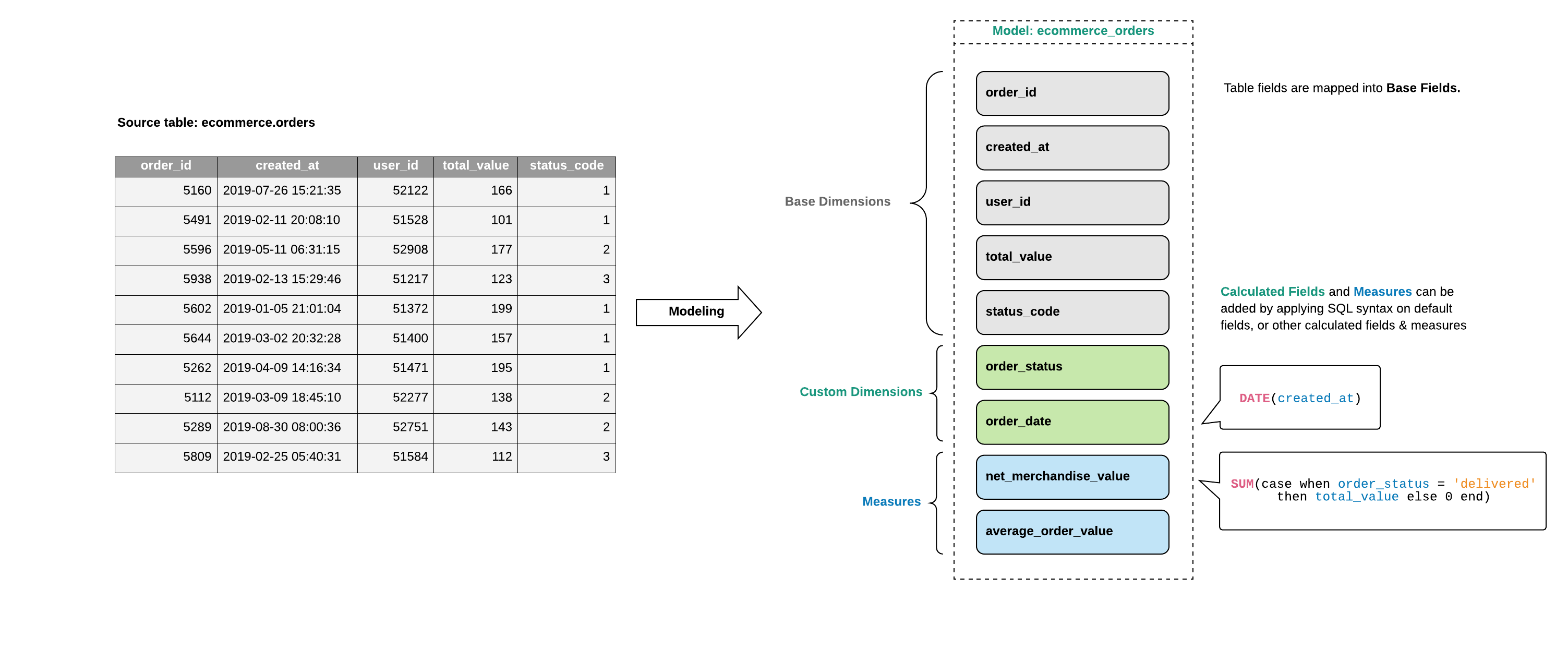What is a Data Model?
A data model is an abstract representation on top of a database table/SQL query that you may manipulate without directly affecting the underlying data.
You can also store additional metadata that enrich the underlying data in the data table. Data model contains information about the data itself, such as: model descriptions, field descriptions, and relationships to other models. You can also extend the data model with calculated dimensions and measures.

Components of a Data Model
A data model consists of:
- Source of Model: Whether it's backed by a Database Table, a SQL query or data from another source.
- Fields: Including Base Dimensions, Custom Dimensions and Measures
- Relationships: Defining how the model connects to other models by specifying the join key and relationship type
- Persistence: Improve model loading performance by turning your logical data model into a physical table in your database.

Types of Data Model
There are 3 types of data models in Holistics:
- Table models: Models created from existing tables in the database.
- Import models: Models created from data coming from other sources (Google Sheet, CSV...). However, Import Model is not available in Holistics 4.0 as we no longer support Extract & Load use cases.
- Transform models: Models created by writing SQL to select from tables or other SQL models
To learn more about each Data Model type, click on the corresponding link.